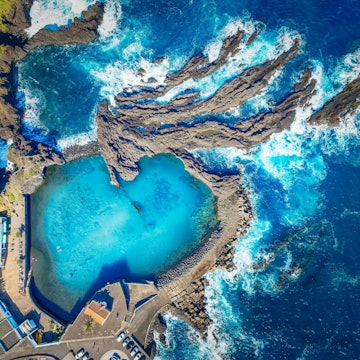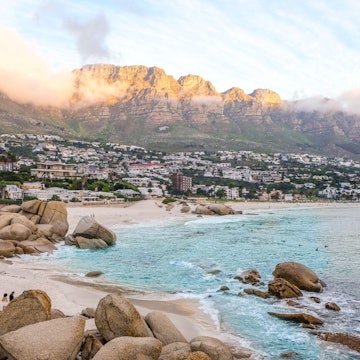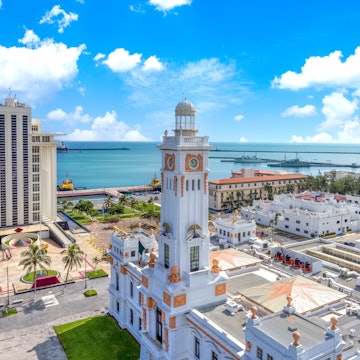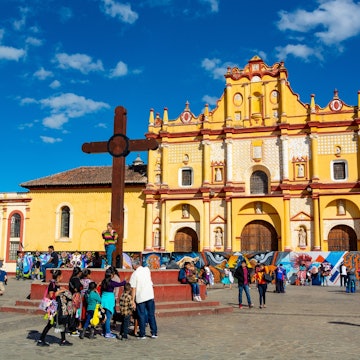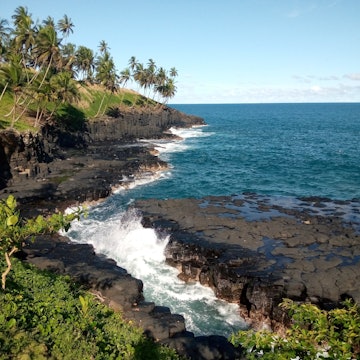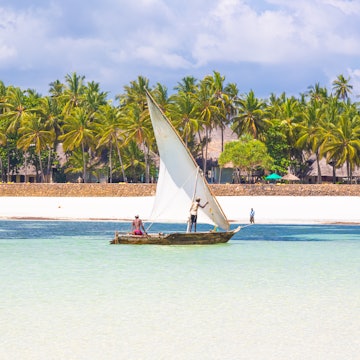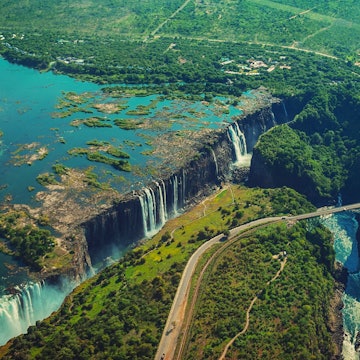
Protecting rhinos from poachers in Africa - what it's like working on the frontline

Aug 23, 2022 • 10 min read

The Rhino Orphanage first opened in 2012 in South Africa © Joe Sills / Lonely Planet
Life cannot prepare you for the sound of rhinoceroses’ cries. They make the tough, immovable animals seem fragile and small.
In South Africa, the cries come in on the wings of hope—helicopter blades beating down over the bush. In the back row of a four-seat chopper, the kind normally reserved for air safaris, an orphaned rhino is about to land.
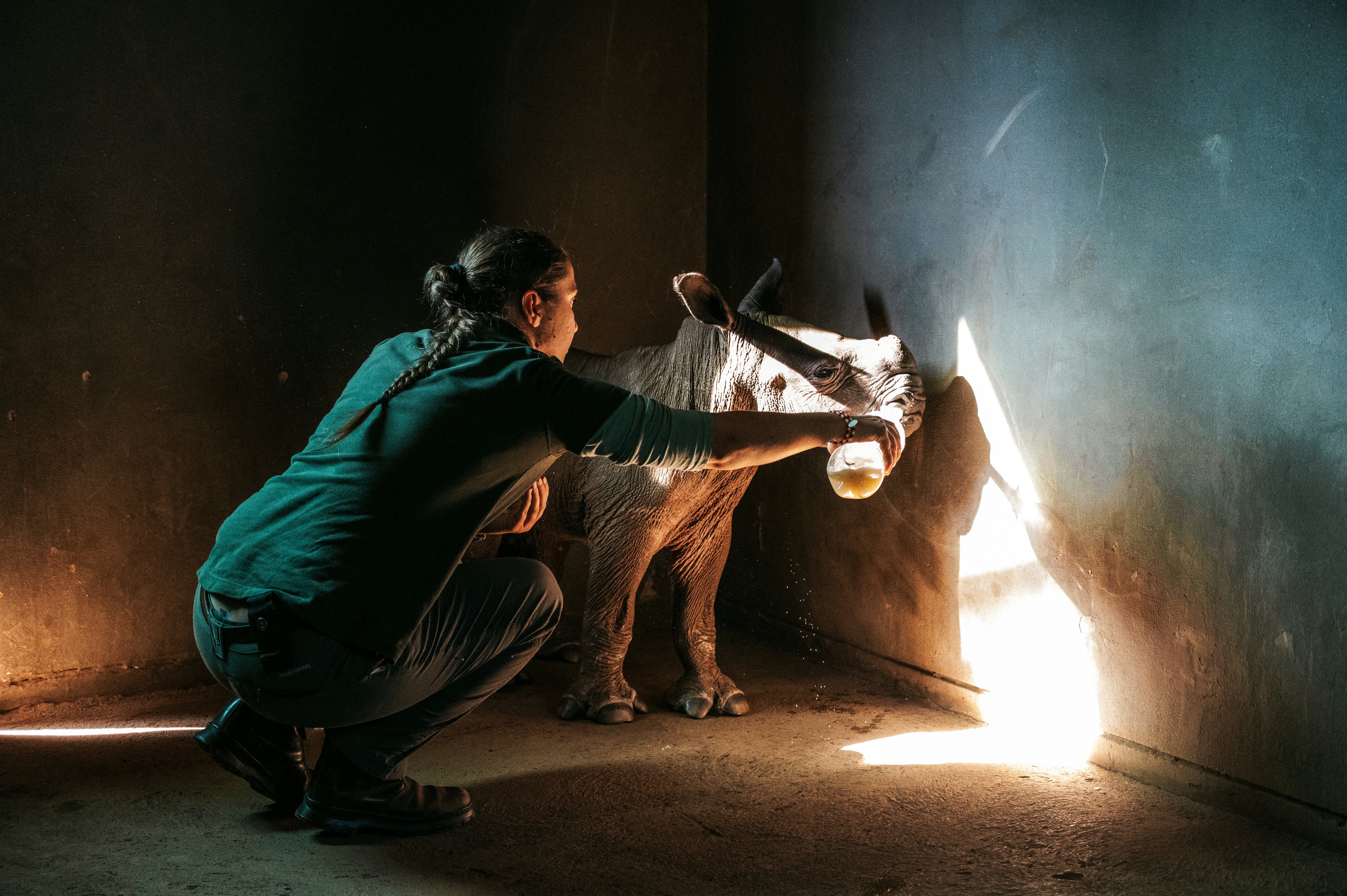
Just five weeks old, the calf was found alone in the wild; its mother, likely a victim of poachers engaged in the lucrative global rhino horn trade, where an elaborate network of international operatives vie for samples of horn selling for up to USD$60,000 per pound.
It's likely her horn is already en route to China or Vietnam, nations where debunked rumors of healing properties fuel a demand for it in traditional medicine.
Dehydrated and wounded, the calf left behind with barely a nub on its nose has a new lease on life.
And I’m on the ground to greet him.
A visit to the world’s first Rhino Orphanage
The Rhino Orphanage, the world’s first, opened in 2012 as a dedicated center for orphaned rhinos like Kwayera – the wrinkled calf quickly ferried from the helicopter to an onsite intensive care unit.

For two weeks in April, I joined a team helping to care for Kwayera. He needs warm milk, blankets and even human body heat to keep him warm at night.
If he lives, Kwayera will spend the next several months hidden, surrounded by barbed wire, electric fences, anti-poaching units and 24/7 care from veterinarians, volunteers and voluntourists dedicated to preserving one of Africa’s most threatened species.
Once numbering an estimated half a million, the southern white rhino population has been decimated. The World Wildlife Fund estimates the total population of rhinos like Kwayera at about 18,000.
Most of those rhinos live inside national parks and preserves, where poaching continues to take a toll on the population. In 2021, 451 rhinos were poached in South Africa alone. In 2022, 259 animals have been killed this year.
In 2018, the last male northern white rhino – 45-year-old Sudan – was euthanized due to age-related health complications at the Ol Pejeta Conservancy in Kenya.
Safari animals: the story of rhinos and the best places to see them in 2022

Kwayera’s cries, now emanating from the ICU, could represent the preservation of his species. Outside, orphanage founder Arrie van Deventer is just one of a team assembled to ensure the first moments of Kwayera’s time at the orphanage go smoothly.
Survival, he says, is no guarantee.
Seated on a lawn not far from the ICU, van Deventer tells me what the first days of the orphanage were like. He remembers one of their first orphans, a calf brought to the center from Kruger National Park with 21 ax and dagger wounds on its head—some so deep that cleaning them exposed the young rhino’s brain.
“That animal showed a spirit and a will to fight,” he says. “Today, she is a 10-year-old rhino cow running around in nature. She made it.”
But van Deventer says not every calf is as fortunate.
“This is not little babies running around and everything is fine. We have cried a lot of tears in this place. Luckily, some of them were tears of joy.”

I’m here because help is no longer the exclusive domain of veterinarians and scientists. Travelers can pay to experience the joy – and, sometimes, the pain – of The Rhino Orphanage, which recently announced a partnership with African Conservation Experience (ACE) to bring voluntourists to its gates. Travelers, provided they’re willing to contribute to the cause, can come.
For about $2200, ACE coordinates voluntourist visits to the orphanage, where they participate in activities like feeding the animals, cleaning their enclosures and maintaining the facility for two weeks.
As for the animals, graduates of The Rhino Orphanage ultimately move on to new lives back in the wild. Rhinos from the orphanage are sent to distant, secluded sanctuaries under the watchful eye of anti-poaching units and wildlife monitors that attempt to protect them from poaching at all costs.
Recently, one of those graduates gave birth to the first calf born from one of the facility’s orphans, one almost identical to Kwayera. For several years, the calf will follow its mother’s horn through the reserve, using it as a guide through tall grass and a shield from its most dangerous natural predator—lions.
Is dehorning rhinos the only way to save them?
Phinda Private Game Reserve is one of the most successful private reserves in South Africa. The mountainous reserve on the coast of the Indian Ocean is a flagship for luxury safari company &Beyond, which coordinates with well-trained anti-poaching units that stealthily patrol the park’s borders day and night.
The firm also partners with the local Zulu community to give indigenous people an ownership stake in the wildlife, which they say provides an incentive for people living near wildlife to protect it.
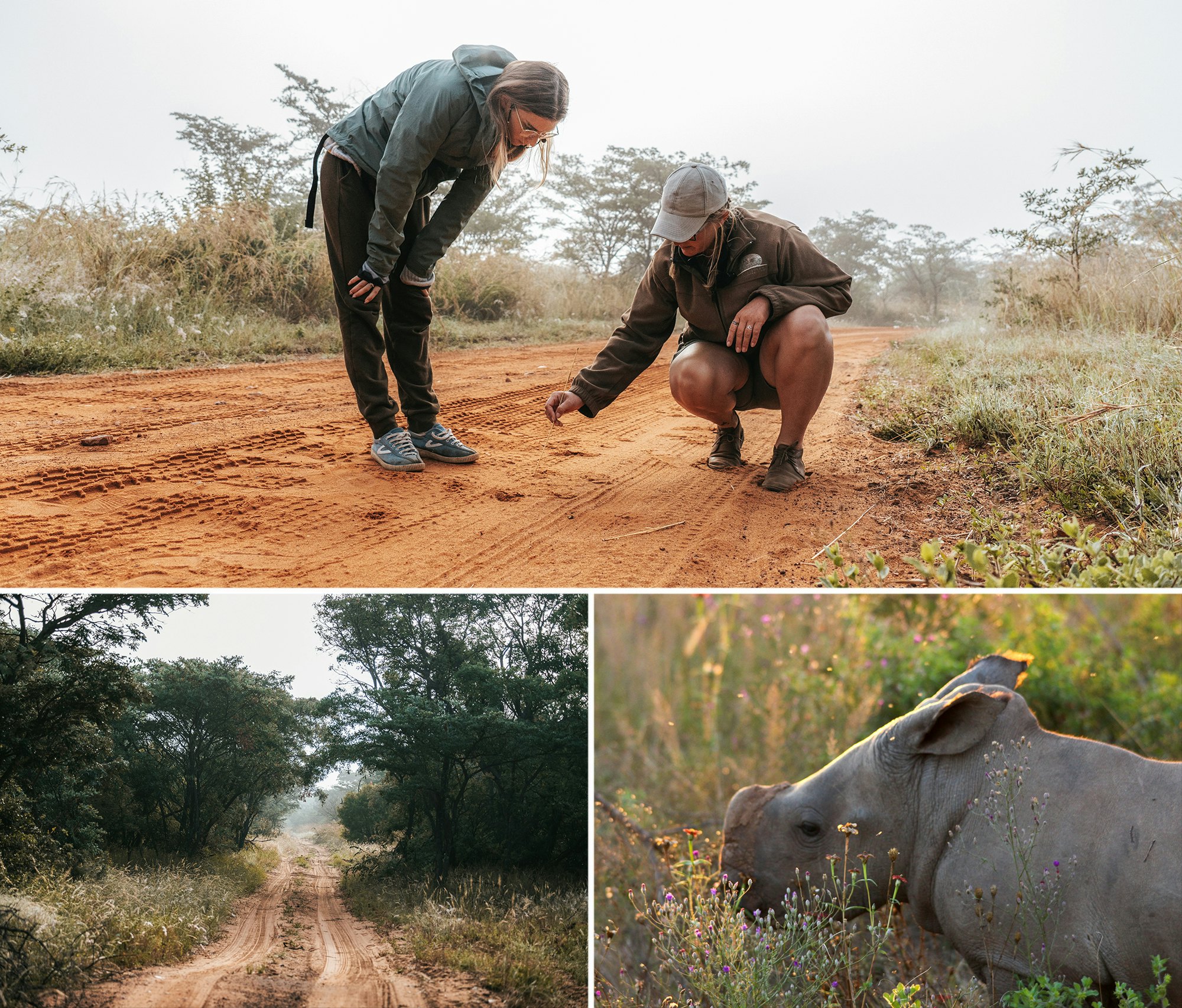
After 14 days with van Deventer’s staff at the orphanage, I made the trek into Phinda to get a glimpse of adult rhinos in the forests, meadows and mountains of the wild.
Embedded with ACE voluntourists in the park’s ecological monitoring team, we set out at sunrise each day in an army green Land Cruiser to log Phinda’s population of rhinos.
We bounce along dirt roads seldom used by safari guides. We pass anti-poaching patrols decked out in ammo belts and assault rifles. When we spot a rhino, we go off-road to get a closer look.
We use professional cameras with telephoto lenses to take detailed identification photos of the rhinos. As part of the tracking program, each rhino has had an ear notched to form a pattern indicating their exact identification number.

Ear notches like these are a common way to keep track of individual rhinos in the bush. The manmade marks are a bit startling at first, but it’s not what we see on these rhinos that strikes me most—it’s what we don’t see.
In weeks of patrolling Phinda’s 112 square miles, we see only a single rhino with a horn.
De-horning. It’s the reason dozens of the animals we spot feature a whittled nose nub rather than the majestic, piercing spear most identified with rhinos for millennia.
Reserves have been experimenting with the method in countries like Namibia, Zimbabwe and South Africa since the 1990s; but after a surge of poaching in the early 2010s, the practice is now widespread.

Proponents of de-horning say the practice discourages poaching. Others, like van Deventer, say poaching numbers are declining due to a growing scarcity of wild rhinos to target.
De-horning has become a common practice at reserves across the continent. It’s a process that involves darting a rhinoceros in the wild—usually from the air—with an immobilizing agent before blindfolding the animal and using a chainsaw to remove their horn.
While immobile, rhinos can hear and feel the people and machines around them. Though the rhinos cannot move, they're aware.
It’s an intrusive and potentially dangerous process, but rhino conservationists believe this is the best path to decreasing poaching.
The procedure is also temporary. Rhino horns are made from keratin, the same material as human fingernails. Like fingernails, horns grow back and have to be trimmed again in time.
Typically, that takes about two years. And while removing a horn makes rhinos a less valuable target for poachers, it could also decrease their ability to defend themselves from predators like lions, socialize with other rhinos, dig for water and forage.
At Phinda, safari guests can pay a fee to participate in de-horning a rhino. The rate varies depending on the number of guests, but the goal is to raise about $2000 per rhino.
Park officials tell me the fee helps fund the helicopter, veterinarian and crew required to remove a horn. Nobody here wants to de-horn rhinos, they say; but they believe it is a necessary step to prevent mass murder.

“It is upsetting that we have to remove the horns,” says Lettie Mantle, a 19-year-old British voluntourist in the middle of a seven-week stint with ACE. She’s sitting in front of me in the Land Cruiser as we rattle towards a crash of seven rhinos (all without horns).
Days before I arrived on site, Mantle was present for de-horning from start to finish.
“I wish it was something that didn’t have to happen, but I think it’s too dangerous to not have de-horning. You’re sitting ducks without it,” she says.
Despite the success, de-horning isn't the magic method to end all poaching. Poachers still target de-horned rhinos for the stump left behind (it's impossible to cut the entire horn) and, according to Save the Rhino, may kill a de-horned rhino out of vengeance and to avoid tracking it again in the future.

Presently, Phinda has one of the lowest rates of poaching in Africa. However, its borders are located about 10 miles from Hluhluwe-iMfolozi Park, a state-owned reserve that helped save the white rhino from extinction in the 1890s but now finds itself under siege.
Though the area has been set aside for conservation since 1875, Hluhluwe-iMfolozi is currently the site of a majority of more than 130 poachings in the KwaZulu-Natal Province this year.
With a wider area to project and less access to private funding for anti-poaching and de-hornings, Hluhluwe-iMfolozi and other state-owned reserves are facing an uphill battle against poaching syndicates. According to South African National Parks, 72% of the country’s poachings occurred on government land last year.
The lingering scars of rhino poaching
Six weeks into my wildlife journey in Southern Africa and I’m finally on the edge of the most famous national park on the continent, Kruger. It’s here, 300 miles north of Phinda, where the African rhino crisis struck hardest.
Too vast to monitor and rife with corrupt insiders, the 7500 square miles of Kruger National Park are a hotspot for poaching. Rhino populations in the area have dropped by a staggering 40% in less than a decade.

In 2012, the white rhino population in the area was estimated at 10,495. The latest figures put the population at 3529.
And though the battle to save South Africa’s rhinos is intensifying at places like Phinda and Hluhluwe-iMfolozi, it still rages in the Kruger area. Two hundred and nine rhino were killed inside the national park last year.
On July 29, field ranger Anton Mzimba was killed by hitmen outside of his home in the Greater Kruger region. Mzimba was a 25-year veteran of Timbavati Private Nature Reserve and a technical director for the Global Conservation Corps, a Denver-based non-profit focused on protecting rhinos.
His story—chronicled in the documentary “Rhino Man” — is a familiar tale to conservationists and rangers putting their lives at risk on the front lines.
As the burbling exhaust of another Land Cruiser winds a dusty corner at Balule Nature Reserve – a privately owned reserve sharing an unfenced border with the national park located about 18.6 miles from Timbavati, a startling scene unfolds before my eyes.

In the distance, I can see a series of what appear to be dozens of large, alabaster boulders lining a trail into a hidden camp. But as our truck rolls closer, I see the scars of a decade of greed laid bare on the ground.
The totems lining this trail are not boulders. They're skulls.
Massive in scale, it takes my eyes minutes to adjust to the grim reality on display.
“We keep them here as a reminder,” whispers my camouflage-clad guide, an undercover anti-poaching ranger. “We remember every single one that we have lost.”
Make it happen: African Conservation Experience connects volunteers with select conservation projects throughout South Africa and Botswana. Trips range from two weeks to six months, with 85% of the fees going towards funding the projects themselves. A two-week stint at Phinda starts at $2459 while the same timeframe for the Rhino Orphanage is $2111 (per project rates drop the longer people stay).







